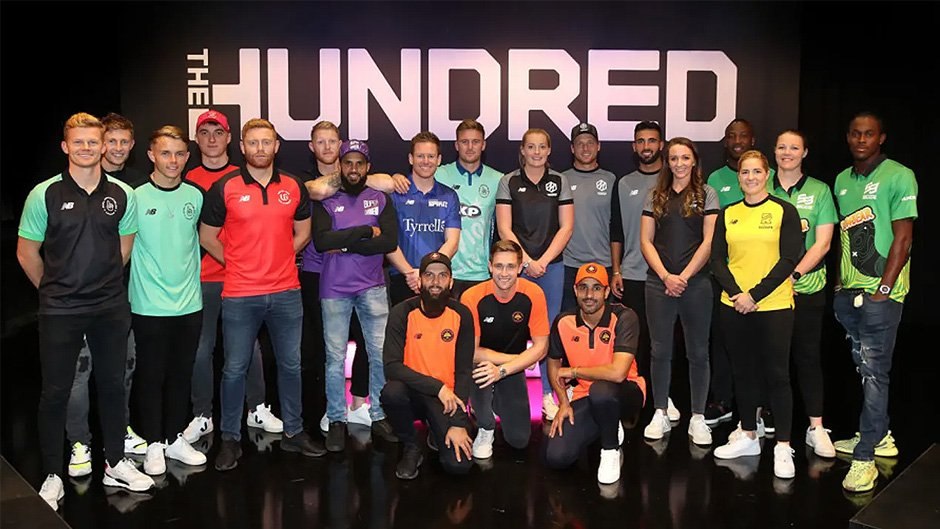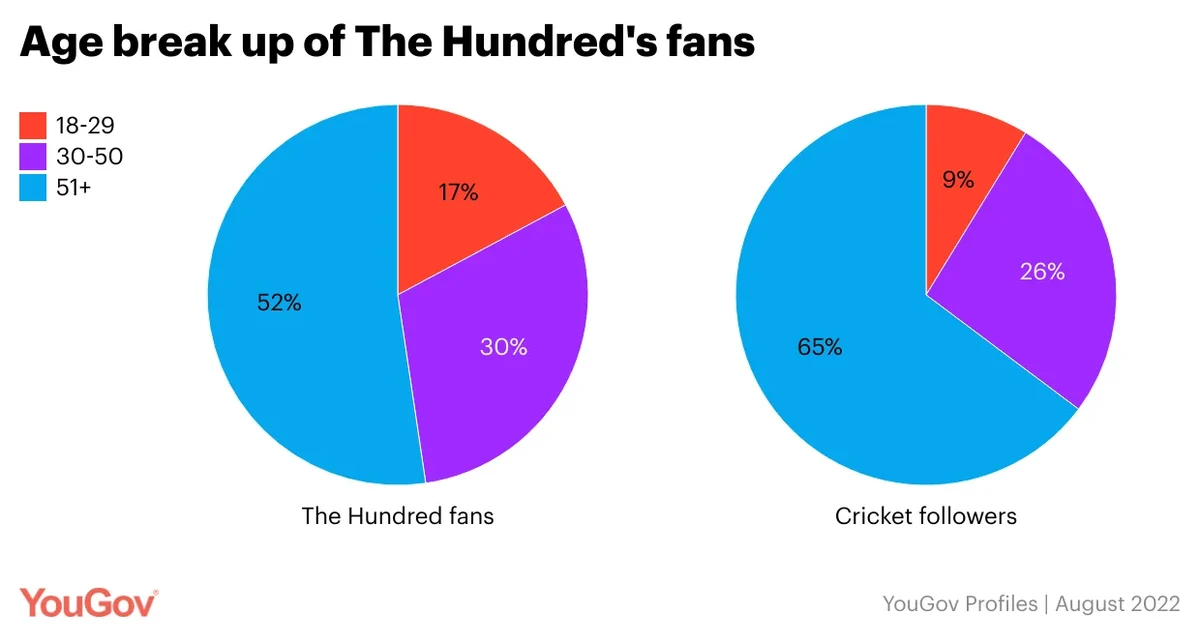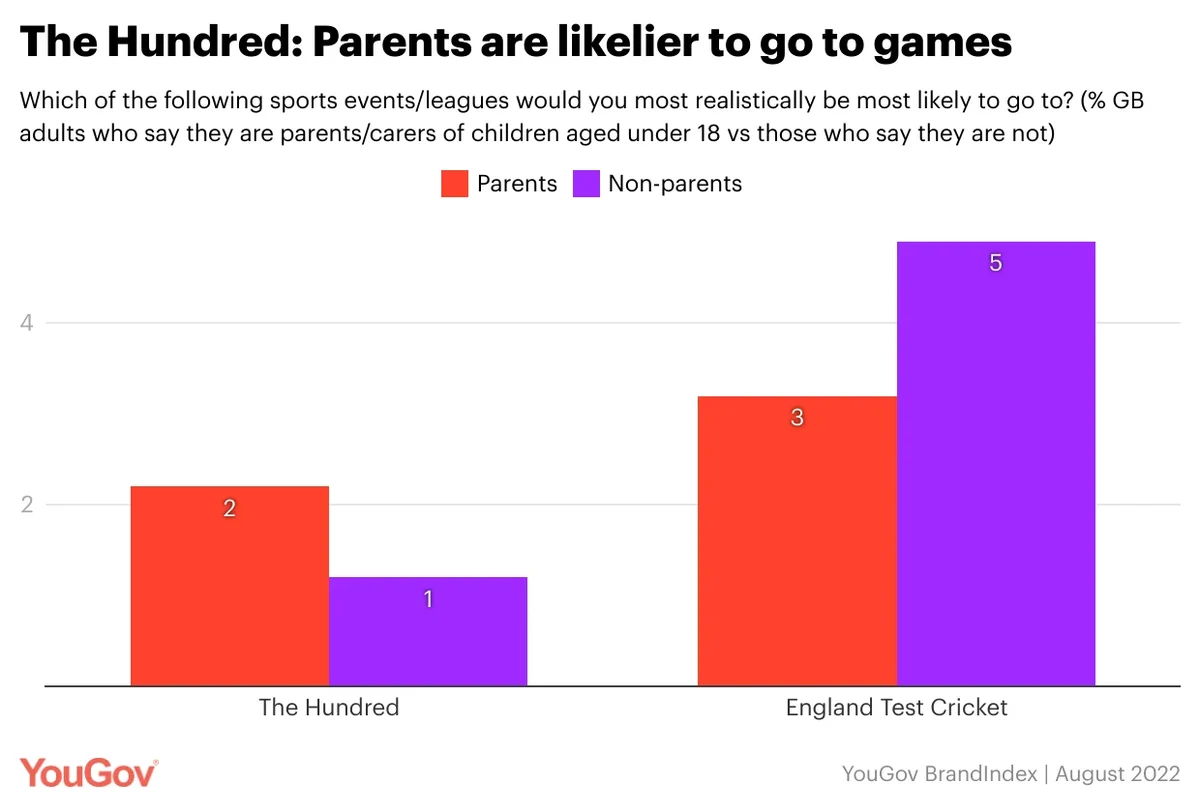
Younger Brits more likely to watch The Hundred
Brits aged 18-29, who make up only 9% of all cricket followers, are nearly a fifth of The Hundred’s fans (17%).
The Hundred was conceptualised as a way for cricket to revitalise its fan following, with an explicit focus on attracting younger audiences. Our data from YouGov Profiles reveals that the tournament might be hitting its mark.
Nearly a fifth of those who say they are somewhat interested in The Hundred or that it is one of their top interests are aged between 18-29 (17%). By comparison, this age group constitutes only 9% of cricket followers in Britain.

Additionally, three in ten of The Hundred’s fans are aged between 30-50 (30%), compared to this group comprising a quarter of those who say they follow cricket regularly (26%).
Those aged over 51 make up two-thirds of the cricket followers’ group (65%), but only about a half of those who express a strong interest in The Hundred (52%).
But it is not just young adults that the tournament is aiming to attract. A key focus is on the even younger demographic – kids. Specifically, the tournament presents itself as an outdoor event that parents can take their kids to during their summer break. While YouGov SportsIndex does not gather data directly from Brits aged under 18, we can take a look at the effect the tournament is having on parents of children aged under 18.
Indeed, the Purchase Intent metric – which reveals the share of consumers that are likely to attend a certain sports event – shows that parents (or carers) of children aged under 18 are more likely than non-parents to go to The Hundred.

This detail is made more striking by the fact that non-parents (5%) are markedly more likely than parents (3%) to demonstrate an inclination to attend England Test matches.
Receive monthly topical insights about the sports industry, straight to your inbox. Sign up today.
Discover more sports content here
Want to run your own research? Start building a survey now
Methodology: YouGov Profiles is based on continuously collected data and rolling surveys, rather than from a single limited questionnaire. Profiles data for Great Britain is nationally representative of the population and weighted by age, gender, education, region, and race. Learn more about Profiles.